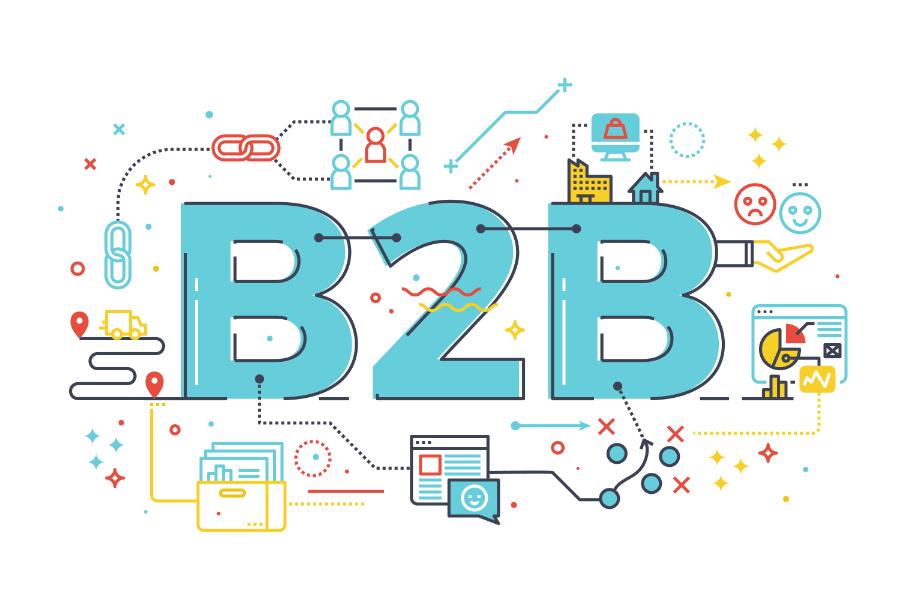
Email marketing
The aim of email nurturing is to provide your leads with educational information that is relevant to their job and industry. You can do this by sending out a series of informative emails, each with a specific goal in mind. For example, an educational eBook might be sent out to your leads every week, while another might feature a top tip on a specific work issue. In either case, you can include a call-to-action button in the email.
When you send emails to B2B leads, it’s imperative to engage them on a personal level. To do this, you should personalize the content. For example, if you have a newsletter, you can send it to a particular person, like a salesperson, or a marketing manager. You can also use retargeting adverts to reach potential customers who may have visited your website but didn’t sign up yet.
When sending email campaigns to B2B leads, always remember that each recipient’s interests are different. A generic promotional email that’s irrelevant to their needs and interests will not help you convert those leads into sales. Instead, use emails tailored to your lead’s interests and help them take the next step in your purchasing process.
Another popular way to generate B2B leads is with cold email campaigns. While cold email campaigns are more challenging, they can be highly effective if done correctly. By tailoring the content of your emails, you can create a steady stream of qualified leads. And by personalizing your messages, you can increase the likelihood of engagement and conversion.
When you’re nurturing B2B leads, it’s crucial to understand the entire sales process. The purchasing process can take weeks or even months. In the meantime, you can use email marketing to build trust and guide your potential clients in making an informed decision. And don’t forget to keep in mind that you don’t want to overwhelm them with emails every day.
Lastly, you can send email campaigns that help your sales team convert prospects. Emails can boost sales by up to 450 percent! You can also build your brand name by attracting customers. The more you nurture your leads, the more you’ll be able to increase your click-through and conversion rates.
Newsletters
In the world of B2B marketing, newsletters are an effective way to nurture your leads. They remind your leads about your company and your products and services, and they act as a light push to convert your leads. In addition, they’re a non-invasive approach to nurturing leads. Newsletters are also a good way to build trust with your subscribers since they provide multiple touchpoints. Furthermore, the content you include in your newsletter should be relevant to your subscribers’ needs. If you can provide value to your readers, this will spark the reciprocity effect and move your leads down the purchasing funnel.
When creating a newsletter for your business, set clear goals. You can’t just shoot for open rates or click-through rates. Instead, set goals that will directly impact your business. This will not only help you tailor your newsletter to your audience, but will also prevent your newsletter from being labeled as spam, which will negatively affect your happy customers. Most email services have options that allow you to exclude unengaged subscribers so that you’re not sending your newsletter to those who’re not interested.
Another way to nurture your leads is to send them discounts and offers. People who are in the early stages of the buying process are less likely to commit to buying, but receiving a discount email is a great way to make them commit. For example, Uber Eats sends email coupons to customers with a PS10 discount. The company also sends cart abandonment emails, which are incredibly effective at getting buyers to go through the checkout process.
Besides offering valuable content, newsletters can also help you gain trust. The goal of a newsletter is to educate your leads and make them feel valued as a customer. For example, educational emails will introduce your company and highlight the benefits of your product. While newsletters should also be informative, newsletters should also serve as reminders of specific issues your leads are likely to be facing.
While nurturing leads can be tedious and time-consuming, it’s a highly worthwhile endeavor. By consistently providing relevant content, you can establish your brand as an industry leader and build relationships with B2B clients.
Event-based emails
Event-based emails can be a great tool for nurturing B2B leads. They can help improve the conversion rate of leads, increase purchases, and lower cost per acquisition. The key is to create content that is highly relevant and complementary to the needs of your target audience. To make event-based emails more effective, you should segment your leads by touchpoints. This will help you determine what your leads need in order to get the most out of your marketing efforts.
Once a lead has completed your event-based email sequence, they will move forward in the nurturing process. If they take action, they will be moved on to the next phase, which can be a new email campaign or communication channel. Leads are interested in solving problems, so the content in these email sequences should focus on how it can help them.
One of the most valuable features of event-based emails for nurturing B2B leads is their ability to integrate with your event management platform. You can track metrics for each event, automate follow-up tasks, and foster collaboration. These tools are great for leveraging event data streams, but event lead nurturing is essential to get the most out of each event.
In addition to event-based emails, you can send out other types of emails to nurture leads. For example, if your target audience is a health conscious one, you can send them emails about vitamins. Make sure the content is relevant to their lifestyle. Similarly, if your audience is a techie, you can send out emails about your latest tech innovations.
Event-based emails for nurturing B2B leads are great for re-engagement. These emails can remind the recipient of an upcoming event and encourage them to buy tickets or make reservations. You can also send out follow-up emails, which remind subscribers to complete a specific task. If you don’t have time for an email nurture sequence, you can divert your email list to a newsletter or quarterly check-in email.
Event-based emails can help you convert website visitors into customers. A webinar replay or sales emails are two examples. These emails can be helpful for B2B companies, but not all businesses are able to inspire purchases right after a webinar. In order to stay top-of-mind, B2B marketers should send re-engagement emails to existing leads. Even if a lead does not respond to your first email, they can be re-engaged with a discount or limited free trial. If a lead responds, they will be automatically placed in a new sequence of automated emails.
Drip campaigns
Drip campaigns are a great way to nurture B2B leads. They keep your prospects informed and engaged with your brand, and help you close more deals. These emails are also a great way to convert leads into customers. To create a drip campaign, first map out the messages you want to send to your prospects. Next, create a sequence of emails, so that they all play off each other.
The goal is to keep your leads engaged until they buy. If they’ve already visited your site, you may want to send them a welcome email to get them familiar with your brand. This email will include a personal greeting and a short welcome message. You can also use the message to let them know about sales and new products.
Once you’ve gotten a subscriber’s email address, you can send them a series of emails to help them with a specific process. These emails could include a password reset or an invoice. Drip email campaigns are an important part of lead nurturing and lead scoring. Before sending your first email, make sure you analyze the user’s behavior and determine which type of messages will work best for them.
While drip email campaigns are ideal for B2B companies, they are also great for non-profit organizations and for educational purposes. With the right email content, these messages can provide real value to your audience and become real moneymakers. By using drip email campaigns to educate your prospects and customers, you can build an email list that grows over time.
Developing a nurturing campaign is a time-consuming and complicated process. But it’s well worth the effort if you close more deals. This strategy is a good way to learn about your customers’ priorities and provide them with consistency. Customers like stability, and that is what you want to offer them.
Once a lead becomes a qualified one, the sales process will begin. Often, it takes multiple touchpoints to convert a lead into a customer. With a nurture email campaign, you can bridge the gap between the potential customer’s problem and your solution.





